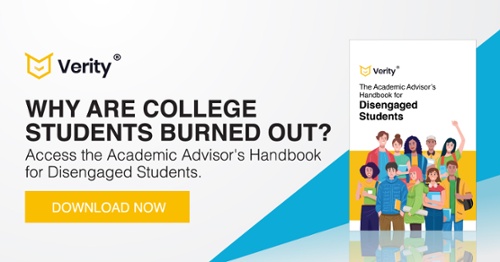Why It's Time to Re-Think the College Student Experience
Honest question: when was the last time that you evaluated the student experience that your school is delivering?
As you probably know, students are dropping out of college in record numbers across the country, for a myriad of reasons including:
- Student burnout
- Affordability
- Uncertain future
- Underwhelmed with college experience
Higher Ed needs to adapt quickly to work against these trends and prove the value of a holistic college experience.
However, in order to do that, you first have to have a good understanding of the current student experience you’re delivering. Here’s why.
Why Evaluate Your Student Experience?
Student Expectations are Higher
Student expectations have always grown and evolved each year, so in a sense, this is nothing new.
However, these expectations have evolved exponentially over the past couple of years.
The disruption of the pandemic and the adoption of new technology like VR and AI have driven rapid change in how college students expect to engage with their school. It’s important for schools to evolve just as rapidly in order to meet these higher expectations.
College students expect you to be:
- Flexible in how you engage with them (think: multichannel communication)
- Adopting the newest trends and technologies
- Smart and intuitive with your software
- Thinking student-first always
- Creating unique and positive experiences for them with every interaction
Are You Providing a Stale Student Experience? Here's How to Tell
Your Competitors Are Doing It
Have you ever heard the saying, “If you fall behind, you’ll get left behind”?
Well, it fits here.
As these student expectations have evolved, you can be sure that other schools will be focusing on delivering better experiences, student-focused initiatives, and ways to separate themselves from competitors.
It’s not just your enrolled students, either. From your very first touch to prospective students, your website, social media, outreach, etc. all send a message about who you are—and more importantly, what their experience will be like at your school.

What Used to Work Isn’t Good Enough Anymore
There are schools that, now that we’ve returned to relative pre-pandemic normalcy, will go back to what they were doing before.
Don’t make this mistake.
Just because the pandemic is over doesn’t mean that you should go back to the same strategies, technologies, and approaches that you used in 2019. It’s not good enough anymore.
College student needs have evolved. Make sure you’re keeping up with them!
Building a Path to a Better Student Experience
So, how can you create a better experience for your students? Here are five simple steps you can follow.
1. Ask Your Students What They Want
This might sound obvious, but Higher Ed as an industry does not do this nearly often or well enough.
We’ve put together this blog post of 10 questions to ask current college students and it’s a great place to start.
Here are a few of our favorites:
- What environments are enabling you to do your best work as a student?
- If you could change one thing about the institution, what would it be?
- What letter grade would you give the institution for the process of (blank)?
2. Evaluate Your Time and Budget
Here’s a fun thought exercise: what would you do if we had unlimited resources? What kind of campaigns would you run? Which events would you host? How would you deliver incredible student experiences?
Now, how much of that is doable with your current resources?
Of course, you can’t possibly do everything on your “limitless” wishlist. But what can you do? What does a slimmed-down version of that look like?
For example, if you’d love to start hosting weekly events but don’t have the budget for it, then start with monthly. The important thing is that you build a plan and stick to it—and focus on quality over quantity.
3. Pay Attention to What Other Schools are Doing
As Higher Ed professionals, we are all finding ways to pull ideas from one another. So, pay attention to what other schools are doing, especially your competitors.
Of course, you don’t necessarily want to copy exactly what they’re doing, but it’ll spark your own ideas and creativity.
Leverage your network. Yes, Higher Ed is a competitive industry—but it’s also supportive, collaborative, and community-driven. Talk to your peers at other schools and see what they’re doing. LinkedIn is a great place for that!
4. Focus on Building a Strong Campus Culture
To put it simply: good things will happen if you’ve got a thriving campus culture.
You and your team won’t always have time to organize events or launch new campaigns every week. However, when you’ve got a strong campus culture, good things will happen organically every single day.
So, look for ways to:
- Give students leadership opportunities
- Improving your approach to student advising
- Help students build life skills
- Increase support for staff and faculty. They play a huge part in delivering the student experience!
Here are a few more fun campus activities ideas.
5. Leverage Higher Ed Technology
Technology has opened up all kinds of exciting ways to deliver incredible student experiences: social media (yes, TikTok!), AI and automation, multichannel communication, and digital events, just to name a few.
And the best part is: so much of this can be done without adding a ton of labor-intensive manual work for everyone involved.
For more ideas on delivering incredible student experiences while also improving profitability and efficiency, download our guide: Academic Advisor’s Handbook for Improving the Student Experience.


